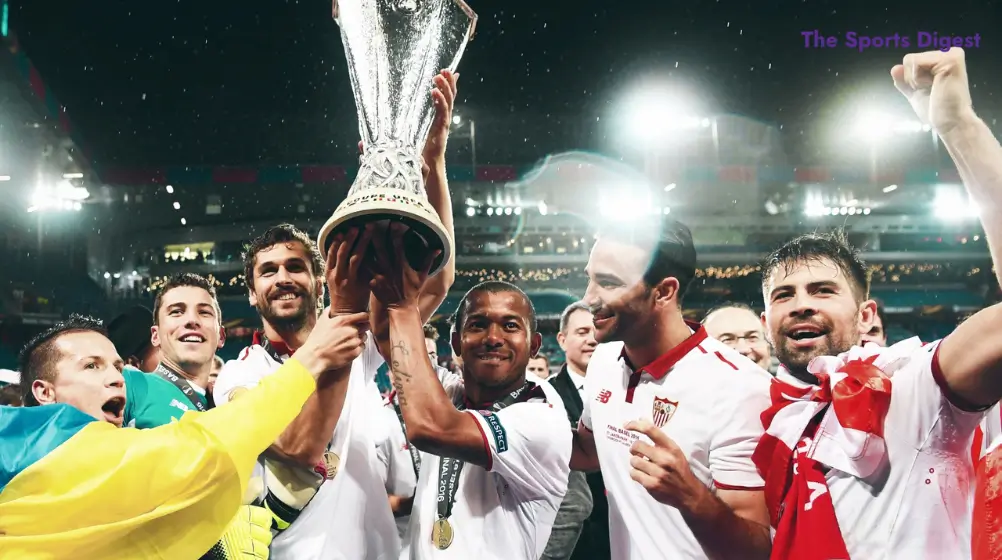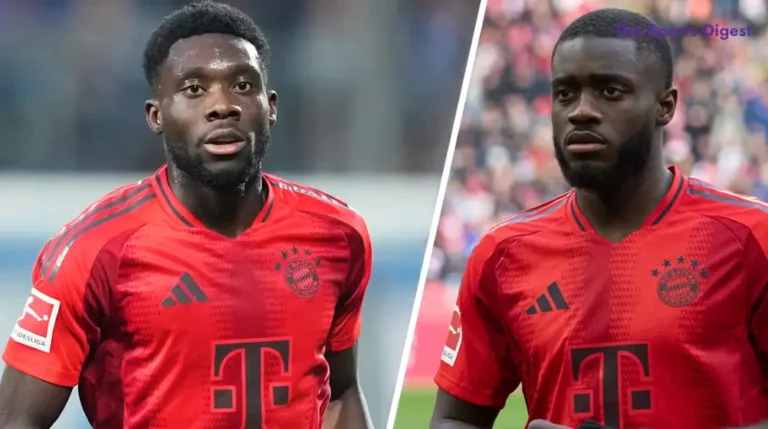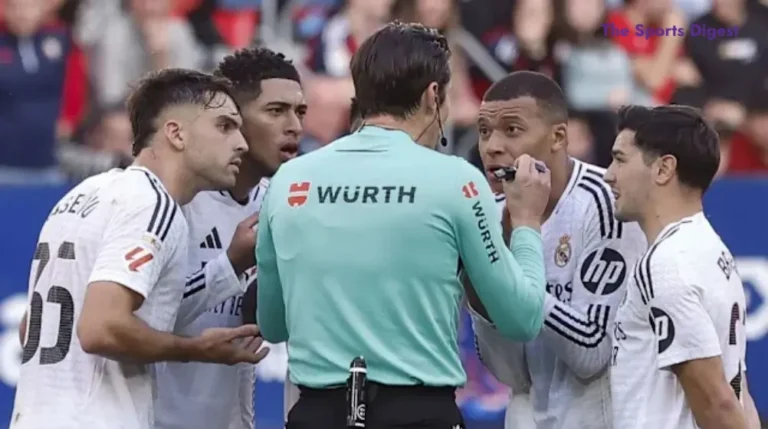The Sevilla FC Rise to European Powerhouse
Few football success stories rival the remarkable transformation of The Sevilla FC since 2001. A club with just one league title to their name, languishing in Spain’s second division at the turn of the millennium, would go on to redefine themselves as European specialists and one of the most shrewdly operated football institutions in the world. This is the story of how an unheralded Andalusian club rewrote their destiny through visionary leadership, brilliant recruitment, and unwavering resilience.
Table of Contents
Humble Beginnings in Andalusia
Sevilla’s roots stretch back to 1890, when British expatriates celebrating Burns Night founded the club just six weeks before their first recorded match in Spain. Despite this long history, success proved elusive. While they secured a solitary La Liga title in 1946 and collected five Copa del Rey trophies, the club spent many years in the shadow of their cross-city rivals, Real Betis.
The contrast was striking: Betis, with their traditionally working-class support base, regularly outpaced The Sevilla in attendance figures. Meanwhile, Sevilla, settled in the commercial heart of the city after establishing their permanent home at the Estadio Ramón Sánchez Pizjuán in Nervión in 1958, struggled to translate their prime location into sustained sporting success.
By 2001, The Sevilla found themselves in the Segunda División while other Spanish clubs like Valencia and Deportivo La Coruña enjoyed Champions League football. The 59-year trophy drought since their 1948 Copa del Rey victory spoke volumes about the club’s struggles. Something needed to change.
Enter Monchi: The Architect of Revolution
That change came in the form of an unheralded appointment that would prove transformative. Ramón Rodríguez Verdejo—better known as Monchi—a former The Sevilla goalkeeper with limited experience in football management, was named Director of Football. Initially viewed as merely a cost-cutting measure, the board tasked him with developing the youth system and implementing a scouting network.
Few could have predicted the seismic impact of this decision. Monchi, soon dubbed “El Lobo de The Sevilla” (The Wolf of Sevilla) for his shrewdness in the transfer market, completely reimagined the club’s approach. He revamped the youth academy and, most significantly, built a global scouting network comprising over 700 scouts—an unprecedented infrastructure for a club of Sevilla’s size.
The Transfer Market Maestro
Monchi’s genius lay in his ability to identify undervalued talent and sell at premium prices. The numbers tell an astonishing story: 22 players purchased for a combined €36 million were later sold for a staggering €229 million. Dani Alves, Sergio Ramos, Ivan Rakitić, and Carlos Bacca represent just a fraction of the talents that flourished under Sevilla’s guidance before moving on to Europe’s elite clubs.
This “buy low, sell high” model created a sustainable cycle. Rather than lamenting departures, The Sevilla embraced them as opportunities to reinvest and renew. The club became a proving ground where careers were revitalized and talents nurtured before inevitably moving on—yet crucially, without derailing Sevilla’s own competitive ambitions.
Breaking the Trophy Drought: The Antonio Puerta Era
The fruits of Monchi’s labor became evident in 2006 when The Sevilla reached the UEFA Cup final against Middlesbrough. Their path there had been secured by Antonio Puerta’s thunderous left-footed semifinal winner against Schalke—a goal that would become enshrined in club folklore. The subsequent 4-0 demolition of Middlesbrough ended a 58-year trophy drought and announced Sevilla as a rising European force.
What followed was a period of unprecedented success. Within 12 months, The Sevilla retained the UEFA Cup, won the Copa del Rey, claimed the Supercopa de España with a 6-3 aggregate humbling of Real Madrid, and defeated European champions Barcelona in the European Super Cup. For the first time in over 50 years, Sevilla even led La Liga for a spell, though their title challenge eventually faded.
This golden era was tragically marked by Puerta’s sudden death in August 2007 after collapsing during a league match. His passing sent shockwaves through Spanish football and brought immense grief to the club where his left-footed strike had changed everything. Yet in their mourning, The Sevilla found renewed purpose.
Sustained Excellence Against the Odds
The departures of successful manager Juande Ramos and several key players might have derailed less resilient clubs. Instead, Sevilla demonstrated remarkable consistency, finishing in La Liga’s top five for six consecutive seasons despite operating on smaller budgets than Barcelona, Real Madrid, Atlético Madrid, and Valencia.
The contrast with their pre-Monchi era is stark. In the four years before his appointment, Sevilla twice finished bottom of La Liga. Since then, they’ve never finished outside the top half in 17 seasons—a testament to the sustainability of their model.
The Unai Emery Era and European Domination
If Monchi laid the foundation, Unai Emery built the cathedral. Under his guidance, The Sevilla achieved what no club had done in four decades: winning three consecutive European titles. Their Europa League threepeat (2014-2016) featured Emery winning all 14 of his knockout ties, cementing Sevilla’s reputation as cup specialists.
Before 2006, The Sevilla had participated in just five finals throughout their history. In the years since, they’ve reached a further 17—a remarkable achievement for a club competing against far wealthier opponents.
The Sevilla Model: More Than Just Transfers
What makes Sevilla’s success so impressive is that it extends beyond brilliant market operations. The club prioritizes signing players with the right mentality—those who embrace the club’s ethos and forge emotional connections. Their home stadium has become a fortress, with passionate supporters creating an atmosphere that intimidates visitors and inspires the home team.
Sevilla has also mastered the art of player rejuvenation. Talents who struggled elsewhere—like Éver Banega and Adil Rami—found their best form at the Ramón Sánchez Pizjuán. There’s something alchemical about Sevilla’s ability to transform players who failed to shine in other environments.
Looking Toward the Future
Sevilla’s model faces growing challenges. Other clubs have attempted to replicate their scouting and recruitment approach, while the financial gap between Sevilla and Europe’s wealthiest clubs continues to widen. Yet their history suggests resilience in the face of such obstacles.
With a record six Europa League/UEFA Cup titles—including an unprecedented three consecutive victories—Sevilla has firmly established themselves as European specialists. Only Real Madrid had previously retained the UEFA Cup/Europa League, and Sevilla has now done it twice.
The club that once wandered nomadically before settling in Nervión has created a new identity—one built on smart governance, tactical flexibility, and a refusal to accept limitations. For a club that spent decades in the wilderness, Sevilla FC has not just rewritten their own history but redefined what’s possible for clubs operating outside football’s traditional power structures.
Have you ever read an article like this?
There are no reviews yet. Be the first one to write one.






